How to Decide Between Burial and Cremation
When a loved one passes away, one of the first decisions to be made is how their body will be laid to rest. The two most common options in the UK are burial and cremation. Each option has its own set of advantages and considerations, and the choice depends on various factors such as personal preference, cultural beliefs, environmental impact, and financial considerations.
This guide will explore both burial and cremation in detail, including a comparison of burial costs and cremation costs, helping you make an informed decision during a difficult time.
Burial Service Options in the UK
Burial has been a traditional practice for centuries, and it continues to be a popular choice. However, in recent years, different types of burial options have emerged to cater to evolving needs and preferences.
A burial service involves the process and arrangements for the burial after a funeral, offering various options such as traditional and eco-friendly choices. Here are some burial options to consider:
Traditional Burial
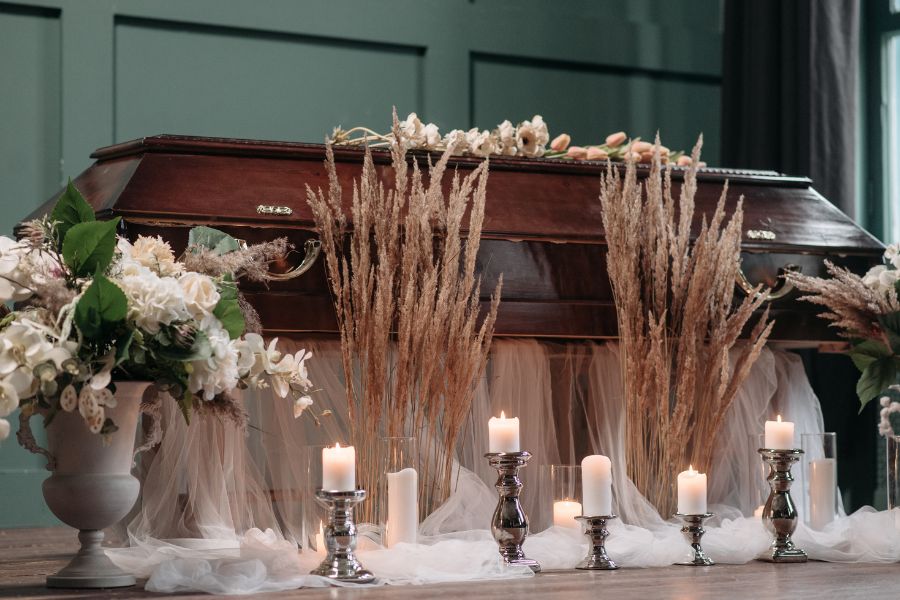
A traditional burial involves placing the deceased’s body in a casket, which is then lowered into the ground. This is the most common form of burial and typically occurs in a churchyard, cemetery, or burial ground. Traditional burials often include a headstone or grave marker to commemorate the deceased.
Advantages:
- • Provides a permanent resting place for the deceased.
- • Offers a tangible place for family and friends to visit and pay their respects.
- • Involves a familiar, established practice that may bring comfort to mourners.
Considerations:
- • It can be expensive, particularly if you choose a private cemetery.
- • Some cemeteries may have limited space, and grave plots can be expensive to purchase.
- • Environmental concerns related to the use of non-biodegradable caskets and the long-term maintenance of burial sites.
- • The burial process can release gases and has a significant environmental impact compared to cremation.
Natural Burial
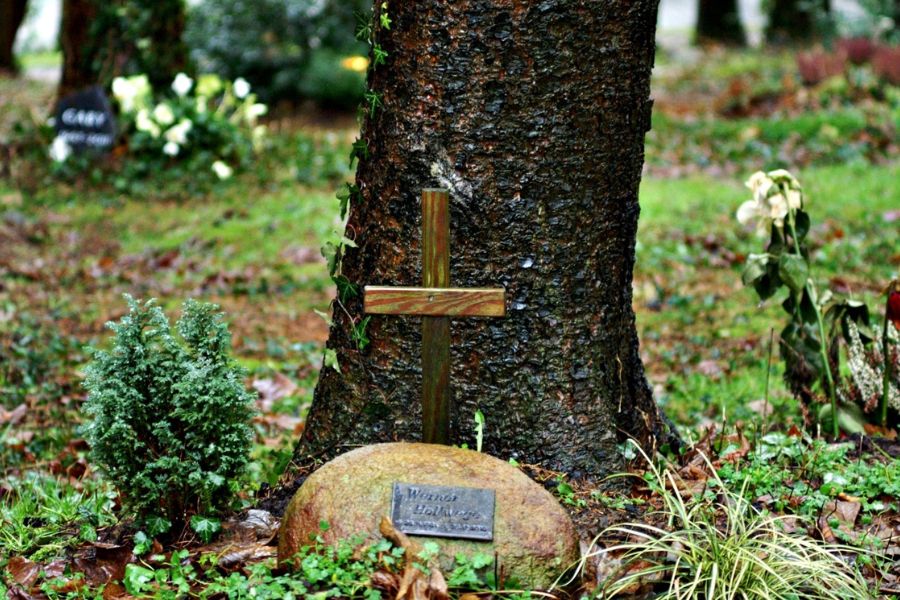
Natural burial, also known as woodland burial or green burial, focuses on minimising environmental impact. The deceased is buried in a biodegradable coffin or shroud, and the grave site is left to naturally regenerate.
Natural burial grounds, which are becoming increasingly popular, offer an eco-conscious approach to interment by using biodegradable materials and promoting natural decomposition through the planting of trees or flowers. Typically, natural burial sites are located in wooded areas or meadows, offering a serene and peaceful setting.
Advantages:
- • Environmentally friendly, with a focus on sustainability and conservation.
- • The deceased’s body is allowed to decompose naturally, without the use of chemicals such as embalming fluid.
- • Many natural burial sites offer scenic, tranquil locations in nature, providing a meaningful and peaceful resting place.
Considerations:
- • The location of natural burial sites may be more remote, which can be inconvenient for regular visits.
- • Not all areas have natural burial sites, so it may be necessary to travel some distance to find one.
- • There may be limitations on the types of memorials and markers that can be used at natural burial sites.
Grave Reuse and Family Burial Plots
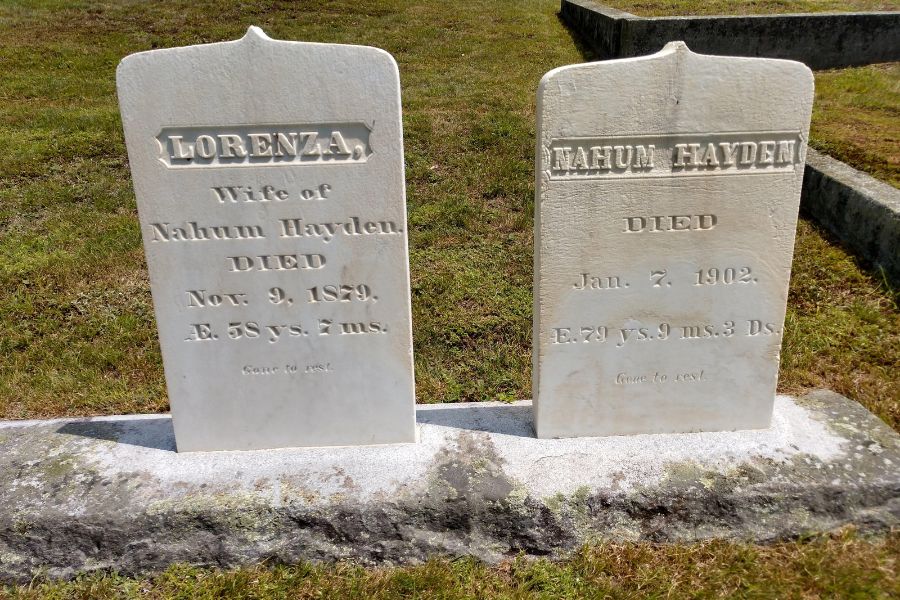
Some families may choose to reuse an existing grave, especially if the grave plot has space for additional burials. Family burial plots allow multiple generations of a family to be laid to rest in the same location.
Advantages:
- • Economical, as it eliminates the need to purchase a new plot.
- • Offers a sense of continuity and family connection, allowing for several generations to rest together.
Considerations:
- • Grave reuse may not be possible in all cemeteries, particularly if the plot has already been filled.
- • The original grave may not have enough space for another body or urn.
Burial at Sea
For those with a connection to the sea, burial at sea is a unique option. This involves taking the body or cremated remains to a designated site in the sea, where it is lowered into the water. The UK allows this practice, and it is carried out by licensed companies that provide the necessary logistics.
Advantages:
- • A deeply personal and symbolic choice, particularly for individuals with a strong bond to the ocean.
- • It can offer a sense of peace, knowing that the deceased is resting in a place they loved.
Considerations:
- • It may not be a viable option for all families, as it requires specific permissions and procedures.
- • No physical memorial or grave site for loved ones to visit.
Cremation Options in the UK
Cremation is another popular choice in the UK, particularly for those who prefer a simpler or less traditional option. The cremation process involves the preparation of the body and coffin, the actual cremation, and the handling of the ashes afterwards. It involves the body being cremated, and the ashes can be kept, scattered, or interred in a meaningful location.
Cremation fees, which are determined locally and can vary within the chosen area, should also be considered. The UK has a rich history of cremation, and there are several ways to handle the cremated remains.
Traditional Cremation
Traditional cremation involves the body being placed in a crematorium’s furnace, where it is incinerated at very high temperature. The ashes, also known as cremains, are then returned to the family, who can decide what to do with them. There are various cremation services available, including direct cremation and traditional cremation services, each with different costs, personal preferences, and customisation options for memorial ceremonies.
Advantages:
- • More affordable than burial, as it eliminates the need for a burial plot and headstone.
- • Provides flexibility with what to do with the ashes, whether to scatter them, keep them in an urn, or inter them in a memorial garden.
- • Less land use, making it an environmentally conscious option for those concerned with burial space and the environmental impact.
Considerations:
- • The process of cremation may not align with the religious or cultural preferences of some families.
- • Cremation does not offer a permanent, physical grave site for family members to visit.
Direct Cremation
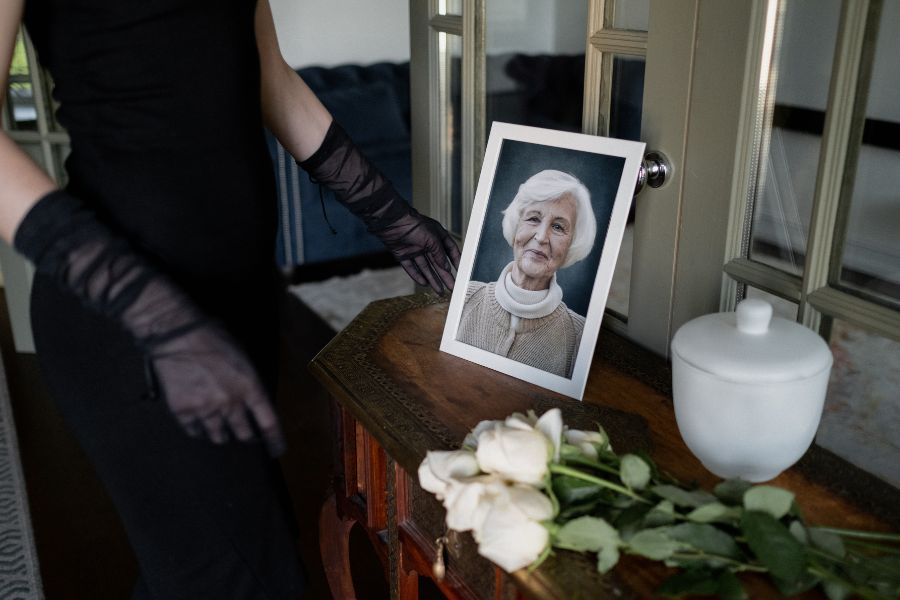
Direct cremation is a straightforward and cost-effective alternative to traditional cremation. It involves cremating the body without a funeral service, and the ashes are returned to the family.
Advantages:
- • Significantly cheaper than traditional cremation or burial.
- • Offers simplicity for those who prefer a no-fuss approach.
- • Families can hold a separate memorial service at a later date, in a location of their choice.
Considerations:
- • No formal funeral service at the crematorium.
- • Some may find it impersonal compared to traditional ceremonies.
Scattering Ashes
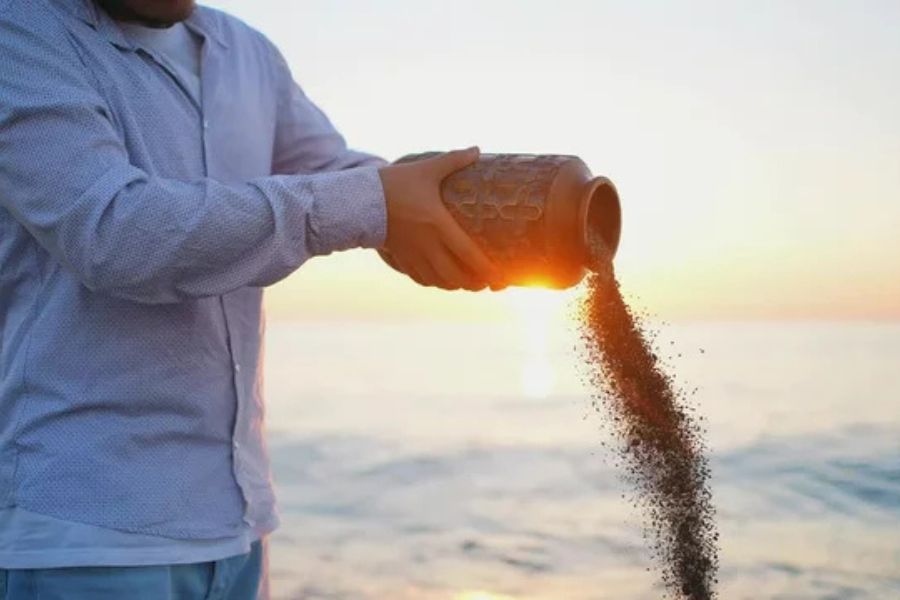
Many families choose to scatter the ashes of their loved one in a meaningful location, such as a garden, forest, or by the sea. In the UK, there are also memorial gardens that provide designated areas for scattering ashes.
Advantages:
- • Provides a deeply personal and symbolic way to honour the deceased.
- • It can be done privately, with no need for formal ceremonies.
- • Ashes can be scattered in a place that holds special meaning to the deceased or their family.
Considerations:
- • Scattering ashes may not provide a physical memorial for family members to visit.
- • Depending on the location, permission may be required for scattering ashes in public areas.
Ashes in a Memorial or Columbarium
Some families may choose to place the ashes in a memorial or columbarium. Memorials can be a simple plaque or a more elaborate urn, while columbaria are dedicated spaces in cemeteries where the ashes can be stored in niches.
Advantages:
- • Provides a permanent and tangible memorial for family and friends to visit.
- • Allows the family to keep the ashes in a dignified manner while ensuring they are protected and cared for.
Considerations:
- • There may be ongoing costs associated with maintaining the memorial or columbarium niche.
- • Space in columbaria may be limited, and availability can vary by location.
Biodegradable Urns
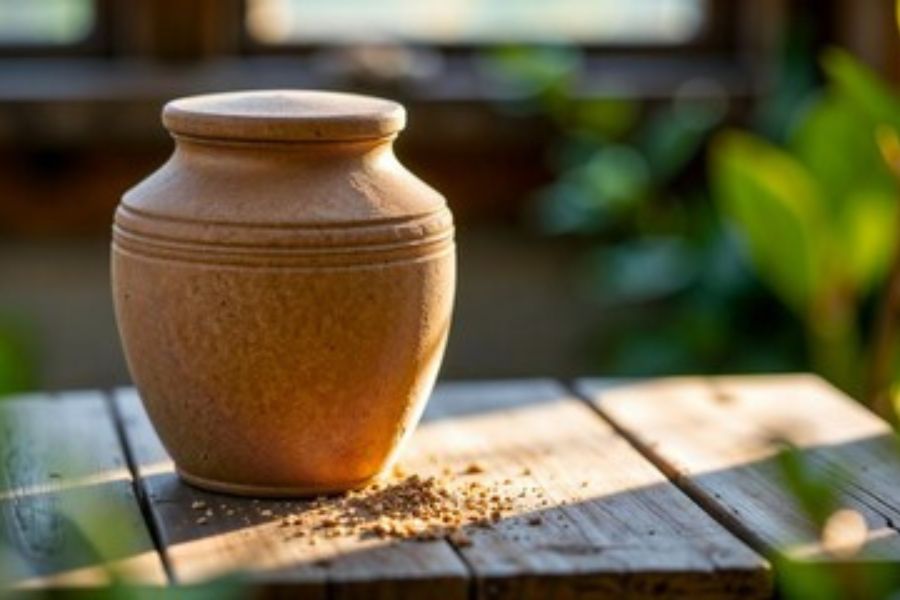
For families who want to return the ashes to nature, biodegradable urns can be a meaningful option. These urns are designed to break down over time when placed in soil or water, allowing the ashes to naturally integrate with the environment.
Advantages:
- • Eco-friendly and offers a more sustainable approach to cremation.
- • Can be buried in a natural location, providing a lasting tribute to the deceased.
Considerations:
- • The biodegradable urn may not last as long as traditional urns, so it may not offer a long-term memorial option.
- • Not all burial grounds or crematoriums may allow the use of biodegradable urns.
How to Decide Between Burial and Cremation
Choosing between burial and cremation ultimately depends on several factors, including personal preference, cultural or religious beliefs, environmental considerations, and financial constraints. When considering cremation vs burial, it's important to understand the differences between the two options, including costs, religious beliefs, environmental implications, and personal preferences.
Additionally, making funeral arrangements is a crucial part of the decision-making process, as it involves honouring the deceased's wishes and receiving support from funeral directors to navigate the details involved in planning a funeral. Here are some key factors to consider:
Religious or Cultural Beliefs
Certain religions and cultures have specific practices or traditions when it comes to burial and cremation. For example, Christianity traditionally favours burial, while Hinduism and Buddhism favour cremation. The Catholic Church historically opposed cremation but now largely accepts it, preferring that the body be present for Funeral Mass and that ashes be treated with respect post-cremation. It is important to consider the wishes of the deceased and their family when making the decision.
Environmental Impact
For those concerned with environmental sustainability, natural burial or biodegradable urns may be the preferred choice. These options have less impact on the land and promote ecological conservation.
Cost Considerations
Cremation tends to be more affordable than burial due to the lower cost of a burial plot and the absence of a headstone. However, cremation costs can vary, and certain memorial options may add to the price. Direct cremation, which involves no service and minimal preparations, is often the cheapest alternative and is chosen by those who prefer to hold a separate memorial service later, highlighting its simplicity and affordability compared to traditional funeral arrangements.
Personal Preference
Ultimately, the choice between burial and cremation comes down to personal preference. Some may feel comforted by the idea of a traditional burial, while others may prefer the simplicity and flexibility of cremation.
Frequently Asked Questions
Can I still have a memorial service if I choose cremation?
Yes, many families choose to hold a memorial service before or after cremation, allowing loved ones to say their final goodbyes. Personalising the funeral service is important, as it can accommodate individual needs and preferences, including traditional burial, cremation processes, religious customs, and various memorialisation options.
How long does cremation take?
Cremation typically takes between two to three hours, depending on the size of the body and the type of cremation equipment used.
Are there legal requirements for cremation in the UK?
Yes, in the UK, a cremation cannot take place until a certified medical professional has signed a certificate, confirming the cause of death.
Can I keep the ashes at home?
Yes, families can keep the ashes in an urn at home, or choose to scatter or bury them in a location of their choice.
What is the cost difference between burial and cremation costs?
Cremation tends to be less expensive than burial, but prices vary depending on location, funeral home, and additional services. Cremation fees, which are determined locally and can vary within the chosen area, also contribute to the overall cost. While funeral directors may help with arrangements, they do not set the cremation fees.
Conclusion
Deciding between burial and cremation is a deeply personal choice and one that should be made with careful consideration of the deceased's wishes, cultural beliefs, and the needs of the family. Both options have their pros and cons, and it is important to weigh them carefully. Whether you choose a traditional burial, a green burial, or cremation, the most important thing is that the decision reflects the life and legacy of your loved one.

